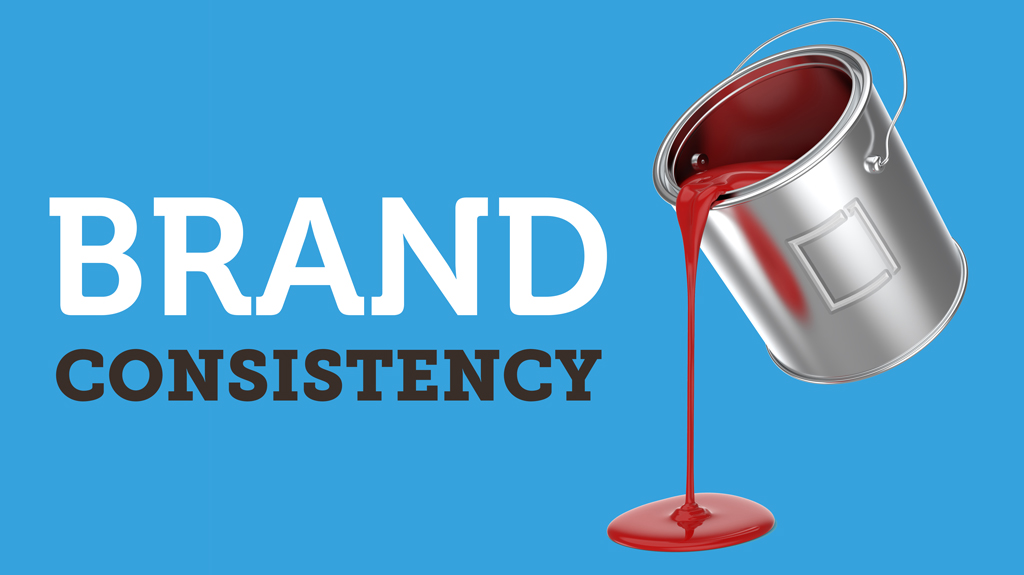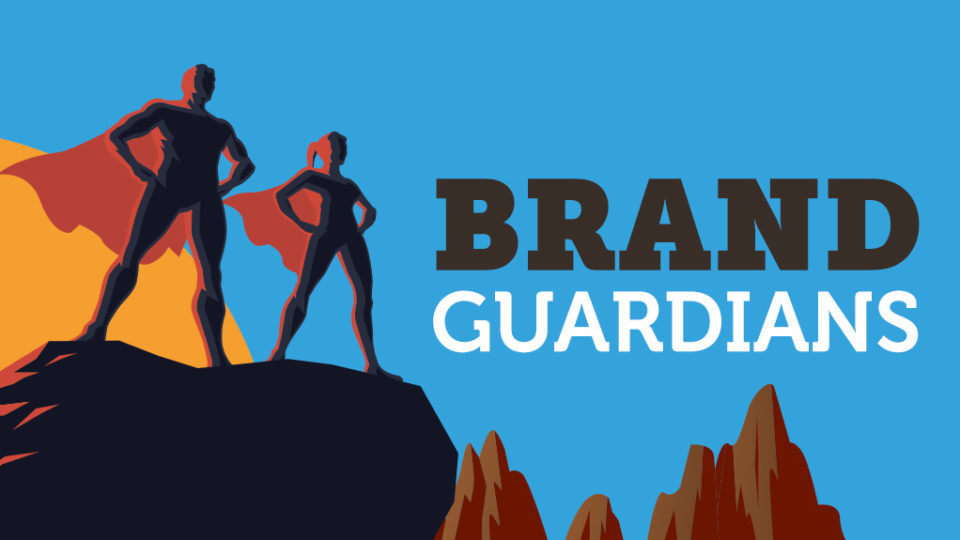Brand Consistency
The importance across all touchpoints
Consistency is absolutely key for brands to become established and remain effective. Formalising clear brand guidelines is one step in providing a foundation for this consistency, but it’s far from enough.
Every experience your audience has with you informs their view of your brand; from the tone of your social media posts, to their experience interacting with your website and how your team answer the phone.
Organisations that take the time to get their brand right position themselves for greater success through providing coherence and relevancy for their target audiences. Building a long-term connection with your audience helps keep you front of mind whenever they think of your product or service. Some brands manage to go the extra mile and turn themselves into a verb – for example, “I’ll just Google that” instead of “I’ll just search for that online”.
But these brands only achieve this level of connection and notoriety by being committed to remaining consistent at every touch point.
Starting right
Getting to the crux of what makes your brand unique is merely the first (incredibly important!) step in building your brand; ensuring your brand is considered in every interaction you have with your audience should be your goal.
If you’ve approached your branding exercise in the right way, you won’t have just made up what you think your brand should be – you’ll have unwrapped what makes it special, put it under a magnifying glass and identified its essence. Approach your brand from this angle and consistency should be easier to achieve, as you’ve not just plucked what you want to be from thin air, you’ve really distilled it from what makes you, you.
Authenticity is crucial to building lasting connections with your audience
Now, some may feel that this comes across as a bit fluffy but it’s far from it. As we’ve discussed before, authenticity is crucial to building lasting connections with your audience. Being authentic also allows you to achieve consistency that much easier.
If you try to build a brand that’s not reflective of what you’re like as an organisation, it’s ultimately doomed to break. You may be able to keep the act up for a while, but if you’re busy trying to be something you’re not, in the end that consistency will falter and your brand reputation will be eroded.
Your internal teams should be included in the initial work around defining your brand, after all it is your team that will be bringing that brand to life. But don’t assume that that’s enough.
Your people need to be encouraged to be an active brand participant and to understand that they are a fundamental part of the brand’s journey. It’s imperative that you effectively communicate the importance of brand consistency with them. That way, you’ll create your first, and arguably the most important, audience that really buys into your brand – your internal stakeholders, the mouthpiece and ambassadors of your brand.
To build this connection between your people and brand, you could:
- run workshops as part of the brand development;
- include all employees on SWOT exercises;
- include brand development activities as part of a social event;
- encourage consistent feedback, suggestions and surveys along each step of your brand strategy.
And make sure you demonstrate the value of your employees input into the brand – show them the results of surveys and exercises and how they directly relate to and effect the direction of the brand.
Show them how their participation makes the brand stronger and that they are actually being listened to. It’s a real opportunity to build trust and strengthen internal relationships too.
Maintaining consistency
Creating clear, understandable brand guidelines is a good place to start. But don’t just produce them and let them sit somewhere on a network drive and/or your marketing teams desktops.
Your brand guidelines need to be accessible and your entire team (not just the marketers in the corner) should be encouraged to utilise them whenever they’re producing new content, documents or communications.
They should also be an integral part of your on-boarding process for new team members, regardless of where they sit in the business. Understanding the brand, and importantly its journey – why it is the way it is – is imperative across the board to ensure a joined-up experience internally and externally.
Moving ahead
Having brought your people on the brand journey, maintaining consistency in external communications will be more straightforward – after all, you’ve developed your brand as a reflection of your people anyway and demonstrated the importance of the brand coherence to them throughout. So, they should all be pretty much perfect at communicating the brand in the right way… right?! Well, that’s ideal world scenario there, but let’s face it, it’s not going to be that easy.
Maintaining consistency relies on thoughtful communication planning and providing easy to digest brand guidelines that make sense to your staff. Some areas will be harder for everyone to grasp right straight away. For example, it may take some time for people to be comfortable communicating with the right tone of voice. So be prepared to offer feedback and help guide those that need it in the right direction.
However, there are functional aspects of the brand that should be easier to adhere to, as they can be somewhat “set” using system functionality and document templates. These include font use and colour palettes, which are both fundamental parts of a brand’s look and feel.
Providing templates and applying default fonts to programmes such as email clients should be a simple step in making sure these things are consistently done right. It takes a bit of work up front but ultimately will protect the brand you’re developing as well as saving time in the long run. There’s really no excuse then when Fred from Accounts sends out an email with a Comic Sans email footer.
Wherever you can make people’s day-to-day communications easier by providing branded templates, the better.
Wherever you can make people’s day-to-day communications easier by providing branded templates, the better, as in order to then stray from the brand they’d have to actively go about breaking it. Document templates also allow you to ensure your logo and layouts are correct.
Ultimately, it is up to you to keep the health of your brand in check. You may find that you can build a community of brand guardians (find out more!) that can support you by demonstrating best practice and how this helps to bolster enhance your brand’s perception. Importantly, these should act as helpful support for colleagues to find the right way to communicate the brand, rather than some sort of marketing gestapo attempting to throw brand breakers under the bus.
To help maintain the relationship between your existing team and your brand, you also need to:
- keep feedback mechanisms in place to encourage staff to continue to be part of the brand evolution;
- ensure your brand is presented correctly in all internal communications, just as you would for any external marketing;
- continue to demonstrate how the brand and the people are connected, perhaps through internal events or simply highlighting and celebrating where individuals have demonstrated alignment to a particular brand value.
Lead from the front
And while these are all important factors to ensure your staff help maintain brand consistency across your business and in your communications, let’s not forget the fundamentals here.
You need to ensure that you are positioning brand consistently across all your marketing channels. Whether that’s your website, social media, printed collateral, advertising or anything else, you need to provide real coherence.
If you have teams of marketers in separate disciplines, you need to set expectations and monitor how your brand is being represented in each forum that you operate.
A disjointed experience from one platform to the next might be a bit annoying for you or your CMO, but aside from getting on the nerves of “the brand police” it might just put off your next big potential client entirely when they struggle to understand what you’re about.
At the very least a multi-channel approach without brand coherence will make you less memorable as audiences fail to tie one of your marketing messages to the next they see. You need a brand-first approach to marketing strategy that maintains the integrity of the hard work you’ve put into defining and building that brand.
Same same, but different
Of course, it’s important for brands to evolve. As marketing opportunities arise in new channels and as businesses grow and develop, brands need to adapt. But any evolution needs to be focussed on the “why” statement that makes you, you.
Don’t change just for the sake of change. Any brand evolution needs to make sense to the loyal base you’ll have built, and build upon the foundations you’ve put in place.
Just remember that when the brand evolves, you need to bring everyone along for the ride. Bring your people, they’ll help bring your marketing channels and communications, and your external audiences will follow.
If you’re struggling to maintain brand consistency or feel your brand is ready to evolve and need some support, then get in touch.
Related posts
-
Strength in Numbers
Bringing your staff on your brand journey is key to ensuring their affinity to the brand and ultimately to the success of the work you put in. -
Brand Guardians
Brand guardians are a great way to ensure your brand is represented in the best possible way, at every opportunity. Brand guardians... assemble






